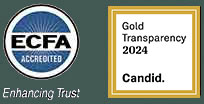“Jesus said to them again, ‘Peace be with you. As the Father has sent me, I also send you.'” (John 20:21)
At our church plant’s first core group gathering, we made our priorities clear to everyone: this church would be committed to gospel-centrality and to planting churches. As our church grew, the burden to send out our first church plant grew, and we began to dream of planting in the northern part of our city. After one year, we’d raised and saved enough money to bring on a church-planting resident. After two years, we commissioned and sent out a core group to become our first church plant.
It cost more money than we thought it would, more key leaders than we expected to send, and more emotional output as we navigated the bittersweetness of gospel goodbyes to people we loved. We knew sending meant that our church would never be the same, yet we were convinced sending also meant that the northern part of our city would never be the same.
We’re now in our seventh year as a church, and by God’s grace, that first church plant (along with a second church revitalization) has turned into three healthy churches committed to preaching the gospel, local elder teams, making disciples, and living out God’s mission in different parts of our city.
While our timeline from church plant to church-planting church was admittedly quick, it was also deeply intentional. Here are four questions our leadership team kept coming back to that helped us strategically move toward becoming a church-planting church.
- How are we creating a sending culture?
- When is the right time?
- Who is the right guy?
- What is the best way?
I’ll address the first two questions below and the remaining two in a follow-up article.
1. How are we creating a sending culture?
In his book, Gaining by Losing, J.D. Greear writes, “Jesus measures the success of our ministries not by how large we grow the storehouse, but by how widely we distribute its seeds. Jesus’ measure of the church is not seating capacity, but sending capacity.”
We knew sending meant that our church would never be the same, yet we were convinced sending also meant that the northern part of our city would never be the same.
Rarely will a church drift into becoming a church-planting church. Healthy church plants are sent out through intentionality and sacrifice, motivated by the gospel. And this must show up in our language. So from day one, we looked for ways to celebrate sending, not just at the larger level of an entire church plant but at the more regular levels of our shared Christian experience. If Christians are a “sent people,” then we should make a habit of using language that reinforces our missional identity. If maturity and multiplication go together, then we ought to regularly teach on being disciple-making disciples.
We build gospel communities/small groups that aspire to plant other gospel communities/small groups. When one of our groups grew larger and needed to become two groups, we never used the language of splitting; we talked about sending. And each time a new group was sent out, we prayed over and commissioned them in our Sunday services.
What we celebrate, people will aspire to and imitate. So if we want to create a sending culture, we must celebrate, teach, and model “sentness” every chance we get.
2. When is the right time?
As every musician and comedian knows (and every church planter must learn), timing is vital. Just because God has laid a (good) desire on your heart, it doesn’t mean he intends to immediately fulfill it. It helps to remember that Joseph spent nearly 14 years between his God-given dreams and their realization. For David, it was around 15 years. Yet the time in-between wasn’t wasted; it was preparatory. So it is with church planting.
As the burden for planting another church grew, and as we regularly discussed our desire to become a church-planting church, one of our board members suggested we determine a few baseline metrics around our attendance and giving to help ensure we didn’t “send too soon” and unintentionally harm ourselves. Because our planting model involved sending out a reasonably large core group, this gave us a few practical targets to aim for that helped us pace our planting.
What we celebrate, people will aspire to and imitate. So if we want to create a sending culture, we must celebrate, teach, and model ‘sentness’ every chance we get.
Consider a realistic time frame you can put on your church’s radar so planting becomes prioritized among other ministry aims. Provide yourself targets to aim for by determining some health baselines for your context (church readiness, attendance, giving, number of elders, etc.). All church planting involves risk, but it doesn’t need to be foolish risk. According to Jesus, considering the cost upfront is wisdom (Luke 14:28–30).
These baselines will vary from church to church, depending on life stages and contexts. It may take your church years to plant, or it may be decades. You might send out a hundred church planters or perhaps just one. And that’s ok. But let’s remember that maturity and multiplication go together.
The harvest truly is great, and church planting is still the most effective means under the sun for reaching this world with the gospel.
Pastor, if it’s been a while since you’ve talked with your team about multiplication, I want to encourage you to put this important reality back on the radar. In light of our glorious gospel and our privilege of participating in God’s kingdom breaking into this world, what is one more step you can prayerfully take today as a church toward sending . . . or sending again?










